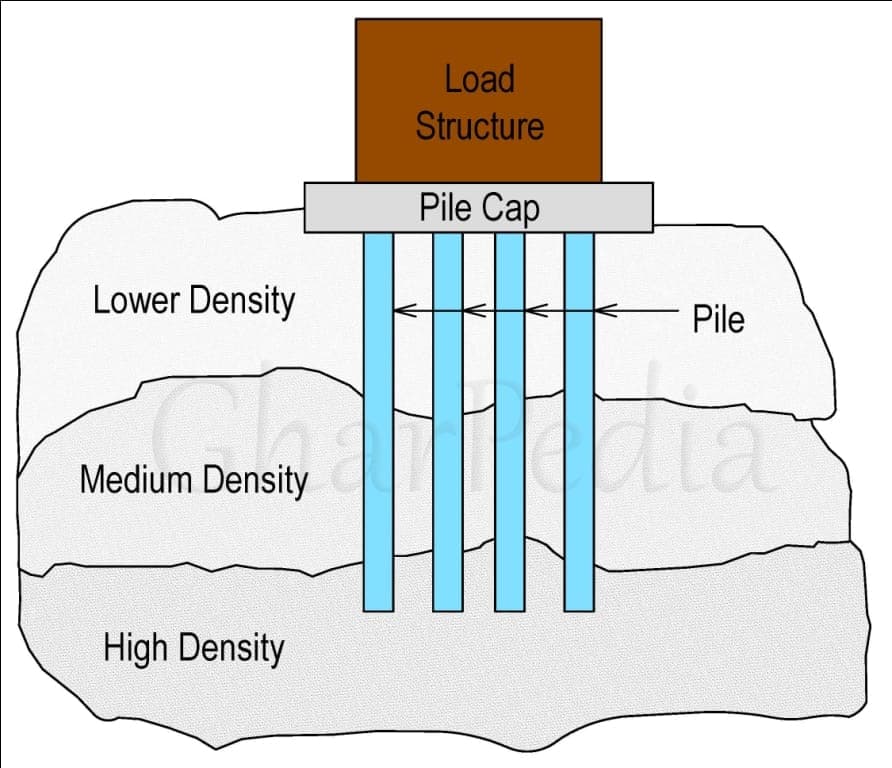
The pile is a small diameter column, which is driven or cast into the ground up to suitable depth. Piles are usually provided in single or groups for most of the structures. The piles may be subjected to vertical loads, horizontal loads or both.
In the case of pile foundation, vary rarely structures are founded on a single pile. Normally there will be the minimum of two or three piles under a column. When piles are placed in the group, there is a possibility of the overlapping the pressure of adjacent piles. The soil is highly stressed in the zones of overlapping of pressure, In such case, soil will either fail or pile group will settle excessively. Large spacing is not recommended sometimes. This would result in need for larger pile cap which would increase the cost of the foundation.
Spacing of Piles
The centre to centre spacing of pile is considered from two aspects:
- Practical aspect of installing the piles,
- The nature of load transfer to the soil and the possible reduction in the bearing capacity of the group of piles.
The choices of the spacing normally depend on strata and stresses:
01. In the case of piles founded on very hard stratum and deriving their capacity mainly from end bearing, the spacing will be governed by the competency of the end bearing strata. The minimum spacing in such cases shall be 2.5 times the diameter of the shaft.
02. Piles deriving their bearing capacity mainly from friction shall be kept sufficiently apart to ensure that the zones of soil from which the piles derive their support do not overlap to such an extent that their bearing values are reduced. Generally, the spacing in such cases shall not be less than 3 times the diameter of the shaft.
03. In a case of loose sand or filling, closer spacing than in dense sand may be possible since displacement during the piling may be absorbed by vertical and horizontal compaction of the strata. The minimum spacing of such strata may be twice the diameter of the shaft.
04. The Spacing of piles, in a case of hard rock, can be much less than friction piles since the high-point bearing stresses and the superposition effect of overlap of the point of stresses do not cause excessive settlements nor overstress underlying materials.






























